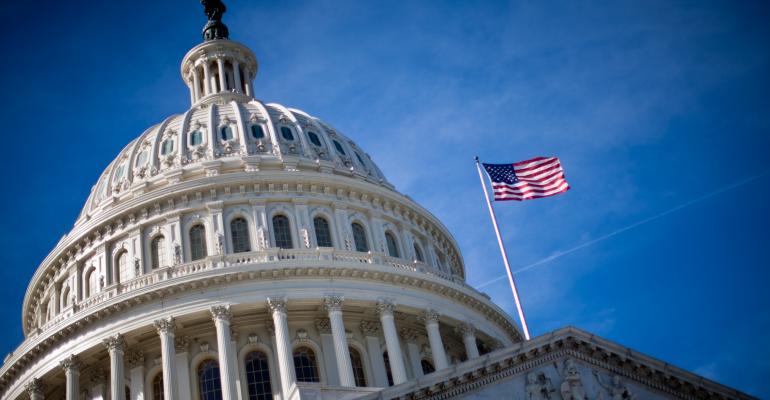(The opinions expressed here are those of the author, a columnist for Reuters.)
CHICAGO, March 30 (Reuters) - Tax reform is up next for our Attention Deficit Disorder Republican government, which just rushed through a chaotic, ugly battle to reform our complex healthcare system. The fight over tax reform promises to be just as chaotic and ugly - and it could mean big changes for Americans saving for retirement.
The Republican tax plan will include huge tax cuts for the wealthy and corporations, reducing top income tax rates, rates on investment income and corporate tax rates. Our lawmakers will need to find new revenue somewhere to offset the cuts. That is where retirement saving could come into play.
To understand why, it is important first to understand this term: “Tax expenditure.”
This is Washington budget-speak for tax revenue foregone due to special tax treatment. The phrase refers to billions of dollars in tax code exemptions, deductions or credits. Tax expenditures are designed to benefit specific activities or groups of taxpayers; the most important include deductions taken by employers for employee health insurance costs, capital gains and mortgage debt interest.
The spectacular collapse of the U.S. House healthcare bill last week will ratchet up pressure to find revenue as part of any tax reform bill, since the proposed healthcare reforms were expected to cut federal deficits by $337 billion over the next decade. By some estimates, the tax reformers will need to find $1 trillion or more in new revenue.
Retirement saving is an attractive target - and one that has been in Republicans' crosshairs before. Tax expenditures for retirement saving exceeded $158 billion in 2015, and will be more than $1 trillion from 2015 to 2019, according to the nonpartisan Tax Policy Center. That includes tax breaks on traditional pensions, 401(k)s and traditional and Roth IRAs.
“Going to the retirement trough certainly is one possibility,” said Shai Akabas, director of fiscal policy at the Bipartisan Policy Center.
ROTATING TO ROTHS
The most ambitious retirement reform would place limits on the current system of tax-deferred saving in 401(k) and traditional IRA accounts, shifting the emphasis to Roth accounts. In a 401(k) or traditional IRA, income taxes are deferred until funds are withdrawn; Roth contributions are made with post-tax dollars, which keeps tax revenue in the current year.
The blueprint for this approach can be found in the 2014 tax reform plan crafted by former U.S. Representative Dave Camp, the Michigan Republican who chaired the House Ways and Means Committee at the time. Camp proposed capping employee deferrals into 401(k)-type plans at $8,750; any contributions over that amount would be taxed upfront (this year, the employee contribution limit is $18,000).
Camp also proposed requiring all employers with more than 100 workers to allow Roth contributions in their workplace plans. The income limits on Roth IRA contributions would have been removed, and contributions to traditional IRAs would have been disallowed.
Moves like this appear to generate new revenue by closing down expenditures, but that is partly because the government estimates tax revenue only for the coming 10 years - it does not account for income taxes collected on IRAs far into the future.
"It looks like you’re raising a lot of new money now, but from an actual macro budgeting standpoint, it doesn’t do that," Akabas said.
Shrinking upfront tax preferences could dampen saving rates, he thinks. It also would encourage account “leakage” - the phenomenon of drawing down retirement savings for nonretirement purposes. Roth accounts permit withdrawal of principal at any time without penalty (taxes and penalties are levied on withdrawn investment returns until age 59-1/2; at that point, all funds can be withdrawn penalty-free on accounts held for at least five years).
More recently, House Republican leadership has signaled interest in creating a new Universal Saving Account (USA) that would permit contributions up to $5,500 per year of post-tax income, and that would be free of additional taxes going forward. It is somewhat like a Roth, with a big difference: funds could be withdrawn for any purpose at any time.
USA accounts could help address the lack of emergency savings in many households. But they also might discourage small businesses from offering retirement plans, according to Brian Graff, chief executive officer of the American Retirement Association, an umbrella organization for several pension and retirement plan professional associations.
"If you now have a tax-free saving account available, I’m not sure I need to have a retirement plan if I’m a small business,” he said. “That means employees are going to be less likely to save for retirement.”
Graff is pointing to the biggest problem here: making big decisions about retirement policy in the context of broader tax reform is the wrong way to go. Considering the huge retirement security challenges facing average American households, we should be considering policies aimed at encouraging people to save.
Cracking open the retirement piggy bank to offset tax cuts for corporations and the wealthy? That is an idea that should be resisted.
(Editing by Matthew Lewis)






